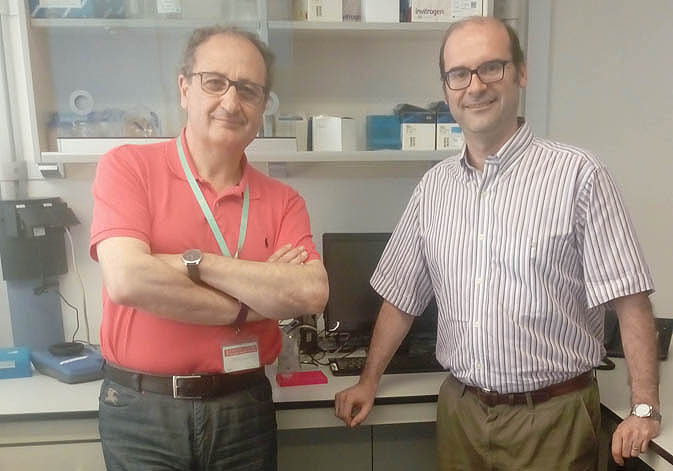
The professor of Genetics of the Universitat de València, Andrés Moya, and the postdoctoral researcher, Vicente Pérez Brocal, have concluded that the viral communities inhabiting in the human mouth are similar regardless of the geographical, demographic and health factors. The study was published by the magazine PLoS ONE. It has discovered viruses whose function and consequences in the human body are still unknown.
It is a pioneer project that is not normally conducted in Spain due to its complexity. It includes individual samples of 72 people of the Valencian Community and establishes the foundation of the research of viruses in the mouth. Researchers of the Fundación para el Fomento de la Investigación Sanitaria y Biomédica de la Comunitat Valenciana (FISABIO) have also participated in the project. The results have been compared with similar studies and have become part of the basis of those researchers that argue the existence of a universal viral community inhabiting in the mouth of most humans.
“We have concluded that the presence of viruses in human mouths is common and is not linked to diseases,” affirm Andrés Moya and Vicente Pérez. The study has been conducted by the Unidad Mixta de Investigación of the Universitat de València and FISABIO. It has also revealed similarities between oral viruses among Valencian people.
“The research has found viruses whose function and consequences in the human body are still unknown. If we knew these functions and their consequences, we could understand the role that these viruses have in our health, as well as the responsibility of us humans for being their carriers,” indicate the researchers.
Another remarkable aspect of the research, which was published in the article “The analysis of the oral DNA virome reveals which viruses are widespread and rare among healthy young adults in Valencia (Spain)”, is the large number of samples used in the study. The samples have been taken from 72 healthy people (38 females and 34 males) aging 18 to 25 years old.
“Analysing viral communities inhabiting in the mouth is more complex than studying usual bacteria in other environments. In addition, a bioinformatics and analytic methodology, mostly developed by this group of researchers, has been used to conduct this study”, underline Moya and Pérez Brocal. “Although it is preliminary and descriptive, the project is a starting point for more complex studies, even if the results obtained won’t be applied immediately.
Article:
Pérez-Brocal V, Moya A (2018) The analysis of the oral DNA virome reveals which viruses are widespread and rare among healthy young adults in Valencia (Spain). PLoS ONE 13(2): e0191867. https://doi.org/10.1371/journal.pone.0191867

.jpg)







